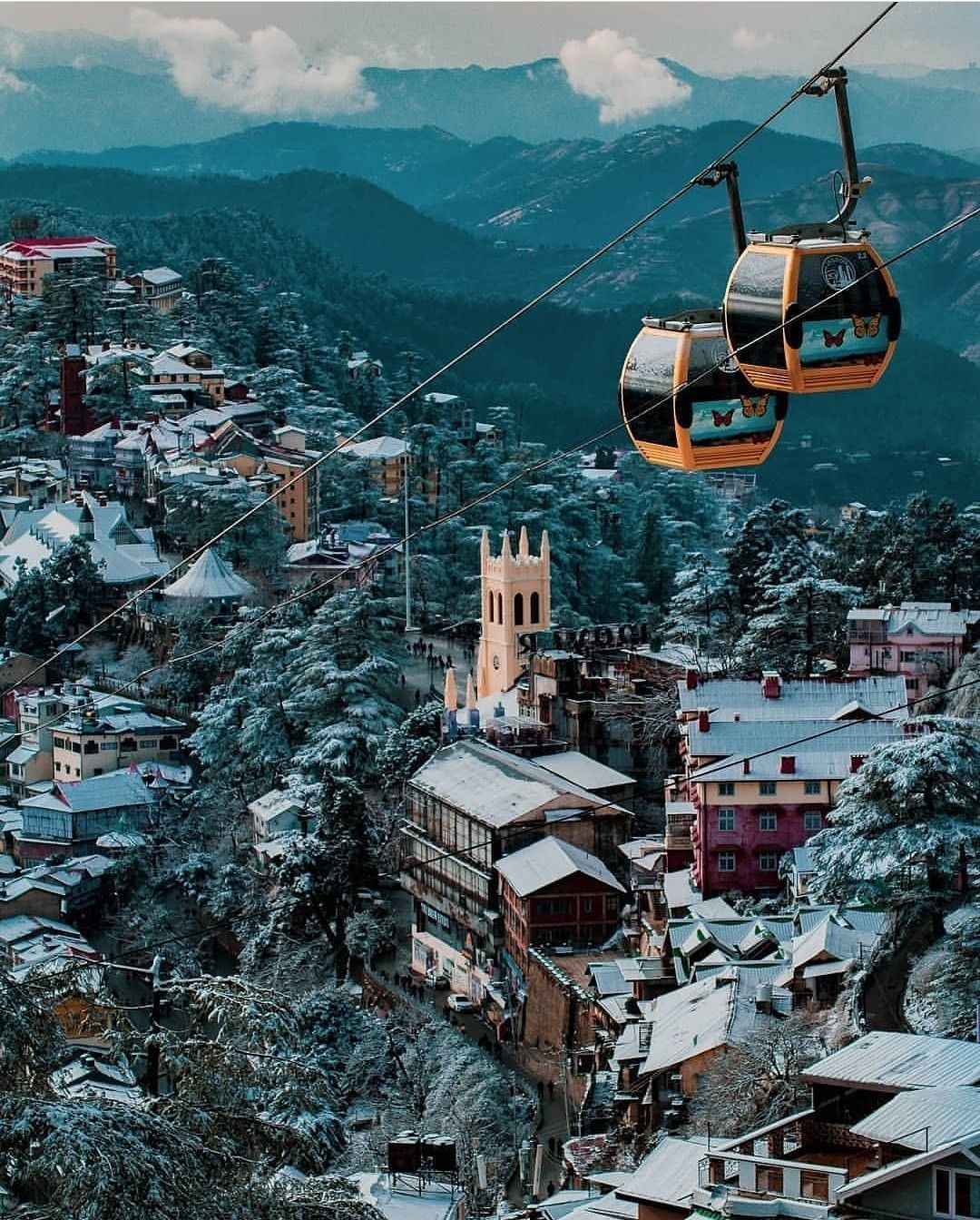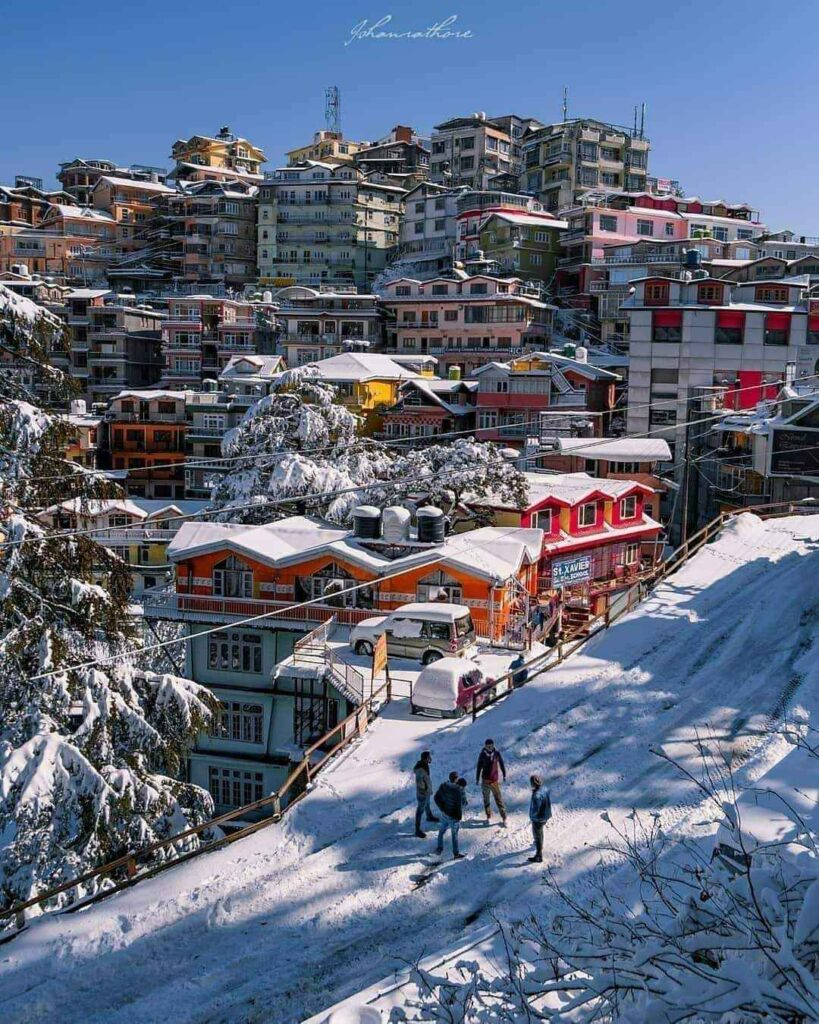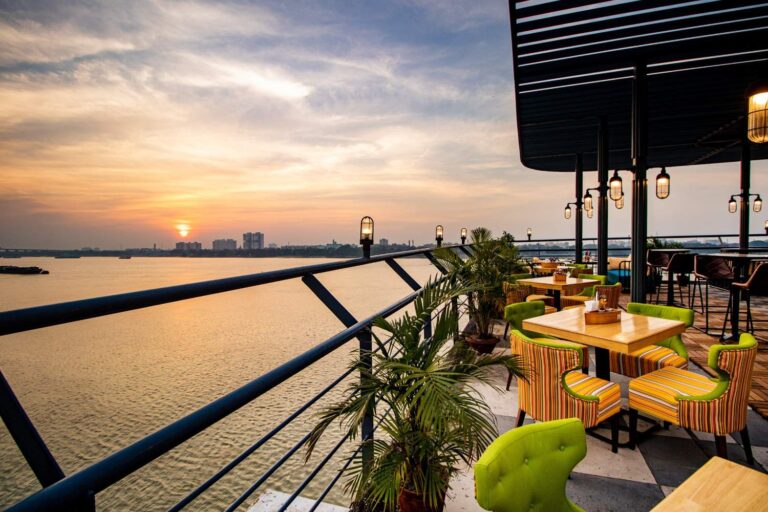Introduction
Perched at 2,455 meters (8,000 feet) above sea level, Jakhoo Hill is the highest peak of Shimla, offering breathtaking panoramic views of the surrounding Himalayan ranges and valleys. At its summit lies the sacred Jakhoo Temple, dedicated to Lord Hanuman, making it not only a geographical landmark but also a deeply spiritual destination.
Every year, thousands of pilgrims, tourists, trekkers, and culture enthusiasts ascend this hill to experience its divine aura and natural beauty. With its mythological roots in the Ramayana, colonial-era significance, and modern-day charm, Jakhoo Hill & Temple remain an integral part of Shimla’s cultural identity.
This blog takes you on a journey through the history, legends, architecture, festivals, tourism, and modern significance of Jakhoo Hill & Temple, showcasing why it remains Shimla’s spiritual crown.
Geographic & Natural Setting
The Highest Point in Shimla
Standing tall at 2,455 meters, Jakhoo Hill is the highest natural point in Shimla, overshadowing even the Ridge and Mall Road below. The cool mountain air, chirping birds, and thick pine and deodar forests create a peaceful escape from the bustling town.
Panoramic Views
From Jakhoo Hill, one can see:
- Snow-capped Himalayan ranges in the distance.

- Sanjauli town, spread across adjoining slopes.

- Shimla cityscape, dotted with colonial-era structures.

The vantage point has made Jakhoo a favorite among both photographers and nature lovers.
Flora & Fauna
The hill is surrounded by dense deodar, oak, and pine trees. Birds like Himalayan magpies and bulbuls are common, while the troops of monkeys, believed to be Hanuman’s divine companions, dominate the temple surroundings.
Mythological Origins of Jakhoo Temple
The Ramayana Connection
The legend of Jakhoo Temple goes back to the Ramayana. During the epic war in Lanka, when Lakshmana (Lord Rama’s brother) was severely wounded, Hanuman was sent to fetch the Sanjeevani herb from the Himalayas.
On his journey, Hanuman is believed to have rested on Jakhoo Hill. The sheer weight of his presence is said to have flattened the hilltop, giving Jakhoo its broad, plateau-like summit.
Sacred Hanuman Footprint
Local folklore states that the Jakhoo Temple was built around Hanuman’s footprint, which is still worshipped. Devotees believe the hill retains Hanuman’s blessings, offering protection to Shimla and its people.
Eternal Presence
Even today, pilgrims feel an unexplainable energy at the temple. The monkeys that dominate the hill are often considered guardians of the sacred space, reinforcing its mythological aura.
Historical Development of Jakhoo Hill & Temple
Early Worship Traditions
Long before the British arrived, Jakhoo Hill was a sacred site for local Pahari communities. They revered Hanuman as the protector deity of the region. Small shrines and offerings existed on the hilltop.
Formal Temple Construction
The exact timeline of the temple’s construction is unclear, but historians estimate that the original shrine dates back several centuries. Over time, local kings and devotees contributed to its upkeep, and priests from surrounding villages managed rituals.
Jakhoo During the British Era
When Shimla became the summer capital of British India in 1864, Jakhoo Hill quickly became a landmark. British officers and their families trekked up the hill for leisure and panoramic views. The temple remained a curiosity for colonial visitors, blending spirituality with nature.
Architecture & Iconic Features
The Temple Complex
Jakhoo Temple has a traditional Himachali style of architecture, with sloping tiled roofs, wooden carvings, and colorful murals depicting scenes from the Ramayana. Its sanctum houses the idol of Lord Hanuman, worshipped daily by priests and devotees.
The 108-Ft Tall Hanuman Statue
In 2010, Jakhoo Temple gained international fame with the installation of a 108-foot-tall Hanuman statue.
- Taller than Christ the Redeemer in Brazil.
- Visible from almost every part of Shimla.
- Painted in bright saffron, symbolizing strength and devotion.
This monumental statue has turned Jakhoo into one of the most recognized landmarks in North India.
Bells, Murals & Monkeys
- Devotional bells line the temple, offered by devotees.
- Murals showcase Hanuman’s feats from the Ramayana.
- Monkeys, both revered and mischievous, add character to the temple. Visitors often carry sticks to ward them off, but locals view them as sacred.
Religious & Cultural Significance
A Pilgrimage Destination
For Hindus, Jakhoo Temple is a sacred pilgrimage. Devotees believe that offering prayers here brings strength, protection, and blessings from Lord Hanuman.
Dussehra Celebrations
The temple plays a key role in Shimla’s Dussehra festival. Local processions, folk performances, and rituals draw large crowds. The burning of effigies of Ravana at the Ridge often connects spiritually with Hanuman’s presence on Jakhoo Hill.
Local Beliefs & Customs
- Newlyweds often visit Jakhoo Temple to seek blessings.
- Devotees tie red threads and bells for wishes.
- Priests recite the Hanuman Chalisa daily, filling the temple with chants.
Jakhoo Hill in Shimla’s Tourism Landscape
Trekking Route
One of the most popular ways to reach Jakhoo is by trekking. The 2.5 km uphill trek begins near the Ridge. Though steep, it is rewarding with forest views, bird sounds, and the thrill of reaching Shimla’s highest point.
Jakhoo Ropeway
For those who prefer convenience, the Jakhoo Ropeway (cable car) offers a short but scenic ride from the Ridge to the hilltop. It provides a bird’s-eye view of Shimla and is a major attraction for tourists.
Tourist Facilities
The temple complex offers:
- Resting areas.
- Food stalls and prasad shops.
- A protective grill around the Hanuman statue.
The blend of spirituality, adventure, and scenic beauty makes Jakhoo Hill a must-visit spot in Shimla tourism.
Jakhoo in Literature, Media & Popular Culture
- Travelogues: British-era writers often described Jakhoo as a “heavenly perch.”
- Films: Bollywood movies shot in Shimla frequently include glimpses of Jakhoo Hill.
- Documentaries: National Geographic and other travel channels have featured the Hanuman statue.
- Spiritual Tourism: Jakhoo Temple is part of Himachal’s circuit of Hanuman temples, attracting pilgrims nationwide.
Conservation, Challenges & Modernization
Challenges
- Monkey menace: Monkeys often snatch food and belongings.
- Urban pressure: Increased tourism brings littering and crowding.
- Environmental stress: Preservation of deodar forests around the hill is crucial.
Modern Initiatives
- Jakhoo Ropeway reduced road congestion.
- CCTV & security for crowd management.
- Green drives by local authorities to maintain forests.
Balancing tourism with heritage preservation remains a continuous challenge.
Jakhoo Hill in Local Life
For Shimla’s residents, Jakhoo Hill is more than a tourist spot:
- It’s a spiritual refuge where they seek blessings.
- It’s a symbol of protection, believed to safeguard the city.
- It’s a recreational retreat, where morning walkers and joggers enjoy fresh air.
Local folklore often describes Jakhoo Hill as the “guardian of Shimla,” standing tall above all.
Future of Jakhoo Hill & Temple
Looking ahead, Jakhoo Hill is poised to balance its mythological sanctity with modern tourism:
- Plans for eco-tourism with guided nature trails.
- Enhanced facilities for pilgrims and international visitors.
- Greater digital promotion of its history and legends.
If preserved well, Jakhoo will remain not just a tourist attraction but a timeless spiritual crown of Shimla.
Conclusion
Jakhoo Hill & Temple embody the soul of Shimla—a blend of mythology, history, spirituality, and natural beauty. From Hanuman’s legendary footprint to the towering saffron statue, from colonial-era strolls to modern ropeway rides, the hill has seen centuries of transformation.
For pilgrims, it is a sacred place of blessings. For tourists, it is a must-visit landmark. For locals, it is a source of pride and protection.
Jakhoo Hill, rising above Shimla, will forever remain a reminder of the city’s spiritual depth and cultural legacy.






